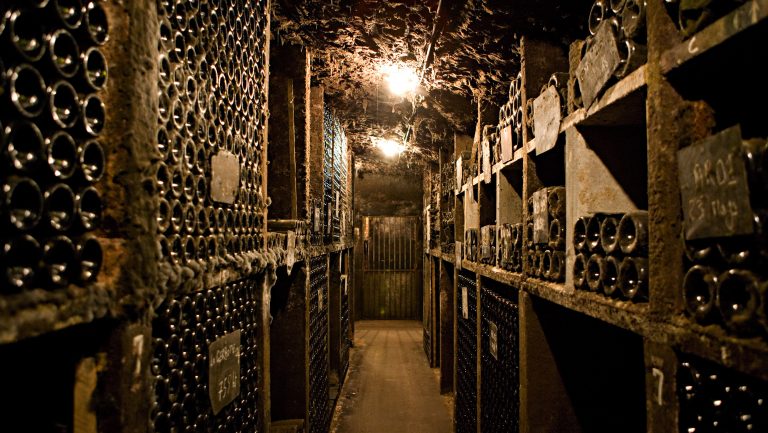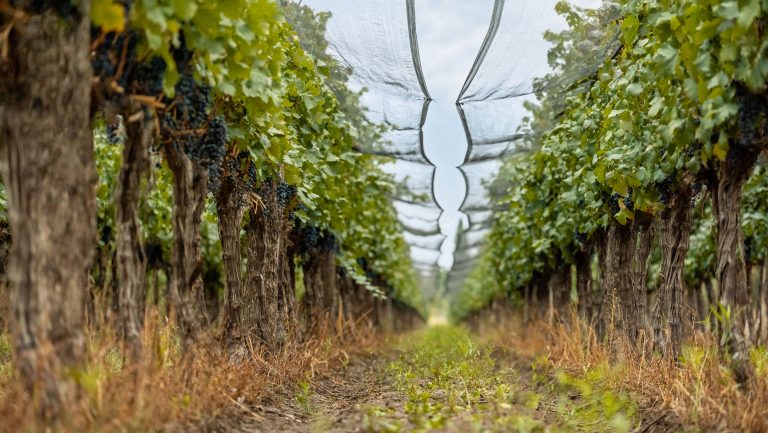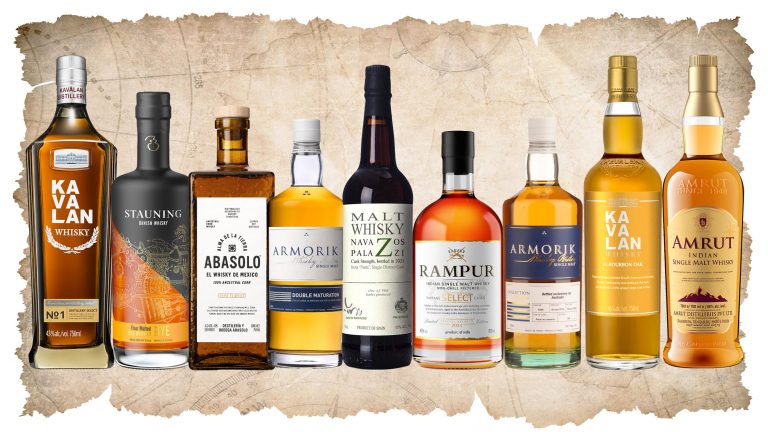Back-vintage wines offer thought-provoking experiences, but the practice of holding back a portion of a vintage to be released again later comes at a premium—one that impacts producers, wholesalers, and on- and off-premise buyers alike.
“Having [an] extensive library [of back-vintage wines] is a very valuable marketing tool for us, as well as a valuable service we provide to our customers because they get to experience these wines with some longevity,” says Rocco Lombardo, the president of Wilson Daniels, which has been offering library releases regularly since the 45-year-old import company’s early days, specifically from Domaine de la Romanée-Conti, Domaine Leflaive, Biondi-Santi, and Elvio Cogno.
Offering library releases comes with a number of financial and logistical obstacles, but the value they bring to the table has long pushed wineries and distributors to hold bottles back and encouraged restaurant and retail buyers to sell them. SevenFifty Daily spoke to beverage professionals who work in each tier to get a better understanding of the costs and benefits of these programs—and what pros think of their overall value.

Don’t miss the latest drinks industry news and insights. Sign up for our award-winning newsletters and get insider intel, resources, and trends delivered to your inbox every week.
Why Maintain Libraries of Aged Wine?
At a fundamental level, the simple desire to enjoy a mature wine is enough of an impetus for many wineries to hold bottles back, says Kirk Wille, the vice president of wine importer Loosen Bros. USA. “It is only with age that wines truly reveal themselves and transform from a delicious beverage to a mesmerizing evocation of a time and place,” he says.
To Giampiero Bertolini, the CEO of Biondi-Santi in Tuscany’s Montalcino, whose lauded Brunello di Montalcino Riserva bottlings are capable of aging up to 80 years, the biggest value of offering these library releases is the ability to showcase the wine’s long aging potential—without the wait. “By holding [back wines] in our library, we are able to provide our collectors and consumers [these] unique experiences,” he says. This has become more valuable as consumers have grown accustomed to drinking wines upon purchase, and less willing to age bottles in their own cellars.

Aging a portion of each vintage for later release is also valuable for professionals. “Winemakers need to see how vineyards and wines develop over time to help refine their craft,” says Tim Malone, the winemaker at Appassionata Estate and J. Christopher Wines in the Willamette Valley.
For both wineries and wholesalers, library releases can help businesses cope with yield fluctuations from year to year—something that is becoming increasingly pressing in regions like Burgundy. “[Late releases] ensure that our partners will be able to purchase library vintages, so there is continuity in the marketplace vintage in and vintage out,” says Lombardo. In larger vintages, Wilson Daniels will place more product into their library to reduce shortages in the future.
According to Raj Vaidya, the director of operations for membership wine community Pressoir, which also hosts events such as La Paulée and La Fête du Champagne, offering library releases benefits both the supplier and the final merchant—it acts as “insurance” for the supplier, allowing them to maintain inventory and cash flow in difficult vintages, and it gives buyers access to aged wine without the responsibility of aging it themselves.
“Generally speaking, with wine prices having risen sharply, and the rising costs of real estate, labor, and other fixed costs in the restaurant business, it has become impossible for restaurants to purchase wines on release and age them until they are mature,” he says. The capital investment is “too high” for such high-cost, low-profit businesses, he adds.
For off-premise retailers like JT Robertson, the general manager at Le Dû’s Wines in Manhattan, proof of concept is the biggest advantage of selling library releases. “The best way to convince collectors that a wine can age is to give them an aged wine,” he says.
Library releases can also be a major asset when less-than-ideal vintages are on the market. “If I have wines from several less-heralded vintages in a row, a library release from a more sought-after vintage can redirect the conversation and reignite the hype,” he says. Ultimately, Robertson finds that releasing aged wines from celebrated vintages is a strategic way for wineries to “reinsert themselves into the conversation.”
Wine professionals share advice on finding and purchasing aged wines for restaurant programs

How to Source Back-Vintage Wines for a List
The Cost of Releasing Library Wines
Of course, there’s a cost to offering library releases, particularly when it comes to limited winery storage space. “There are significant costs associated with maintaining a library inventory, but they are viewed as part of an ongoing investment,” says Hélène Seillan, the assistant winemaker at Sonoma County winery Vérité.
In addition to the upfront cost, holding back library releases offers no immediate return on investment from a production standpoint, and creates the headache of maintaining top-tier bookkeeping, says Malone, which is needed to keep track of the bottles being stored.
Wineries must also consider the additional taxes placed on library wines, says Vaidya. “If wineries hold the stock as ‘commercial’ stock, they are taxed on the unsold stock annually—which means that if they’ve invested in aging wines on site for a late release, they will have to sell it at a substantially higher price than the original price,” he says.
Storage costs also play a major role for importers and distributors who hold back vintages. “Through the storage of excess inventory, the wholesale company is locking up a material amount of capital,” says Vaidya.
According to Lombardo, Wilson Daniels holds back an average of five to 15 percent of an allocation per year, and the wines are typically sold no more than five years from their initial release date. Ninety percent of library releases are generally allocated to on-premise locations, and are strategically released in the fall in order to hit the market during the holiday season.

Though the cash flow restraint incurred by suppliers isn’t passed along to buyers—they can immediately go to market with the library releases—these bottles come with a higher price due to the supplier’s added premium for holding back stock. Additionally, some producers and distributors also take a higher margin on older wine, which can skew pricing and make it less competitive compared to the secondary market.
“The Bordeaux market suffers from this problem, where old vintages are plentiful in the open, secondary market, and tend to be very expensive when coming directly from the château,” says Vaidya. For this reason, it is not always deemed worthwhile to source directly from a producer, despite the added value of provenance.
Robertson cites scarcity as his biggest issue, as library releases are offered so few and far between. “I’m often confronted with 6-, 12-, [or] 18-bottle allocations, which don’t always help me in terms of sales,” he says. Though rarity can help push sales, limited allocations mean that fewer clients end up being able to taste these wines.
Vaidya finds that the final merchant—be it a restaurant or retailer—tends to benefit the least from library sales, as the substantial markups created on the supply side can often bring too much of an added cost. “This puts the business in the position of having to critically look at the value of buying these wines directly, as opposed to via the secondary market,” he says.
Despite the implications that come with library releases, in Wille’s experience, well-made wines from serious producers will almost always increase in value as they age. “Serious wine collectors are always searching for older vintages of wines that have shown their greatness,” he says.
For Malone, the value goes beyond financial reasonings, as he finds that library releases can help wineries establish their brand. “Showing that you can make wines that mature and develop beautifully over time is the sign of a great winery,” he says. “Buyers get to see what aging does and realize that an investment in your wines for their cellar is a good investment.”

Dispatch
Sign up for our award-winning newsletter
Don’t miss the latest drinks industry news and insights—delivered to your inbox every week.
Vicki Denig is a wine, spirits, and travel journalist based between New York and Paris. Her work regularly appears in Decanter, WineSearcher, Food & Wine, and more. She also works as a content creator / social media manager for a list of prestigious clients, including Beaupierre Wine & Spirits, Corkbuzz, Veritas Imports, and Crurated.








